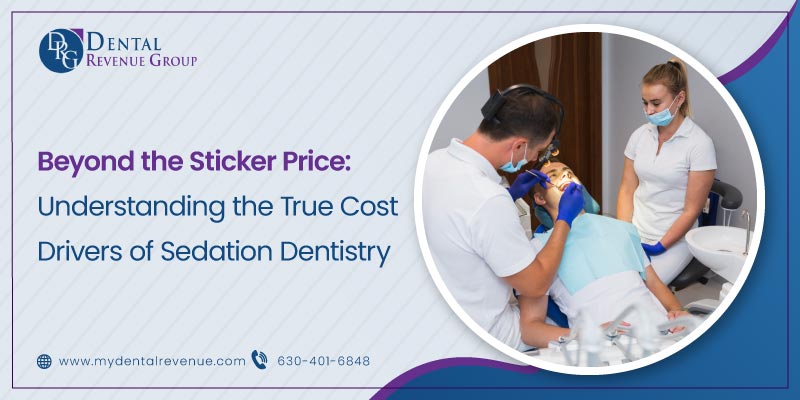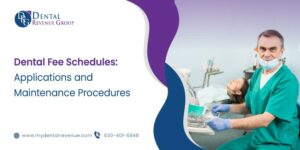Do you freeze up at the mere thought of a dentist’s appointment? As reported by the Academy of General Dentistry, you’re far from alone in this; approximately 40 million Americans consistently avoid visiting their dentist due to dental anxiety. If your anxiety makes dental appointments a daunting prospect, the solution you might be seeking is sedation dentistry. But what about the cost of dental sedation? In this blog, we will explore the various factors influencing the price of sedation dentistry and why it can be a valuable investment in oral health and well-being.
Understanding Sedation Dentistry
Sedation dentistry is a specialized approach to dental care that utilizes sedative medications to create a more relaxed and comfortable patient experience during dental procedures. Sedative medicines are administered through various means, such as oral medications, nitrous oxide (commonly known as laughing gas), or intravenous (IV) sedation. The degree of sedation can range from minimal, where patients remain conscious and responsive, to deep sedation, where they are in a state similar to sleep but can be easily awakened. Sedation dentistry is particularly beneficial for individuals who experience dental anxiety, have a low pain threshold, possess a sensitive gag reflex, require extensive dental treatments, or find it challenging to endure prolonged periods in the dental chair. It is also valuable for patients undergoing typically painful or uncomfortable procedures, such as root canals or extractions.
Type of Sedation Dentistry
One of the primary factors influencing the cost of sedation dentistry is the type of sedation used. Dentists offer various levels of sedation, ranging from minimal, such as nitrous oxide (laughing gas), to moderate and deep sedation, administered through oral medications or intravenous (IV) sedation. The more intensive the sedation required, the higher the cost. Now, let’s explore the four types of sedation commonly used by dentists:
Oral Sedatives
These are prescribed medications from the benzodiazepine family taken before the appointment to control anxiety levels. While they do not relieve pain, the dentist may use a local anaesthetic to keep you comfortable during the procedure.
Intravenous (IV) Sedation
IV sedatives are not pain relievers, so the dentist may include a pain-relieving medication in the IV or administer it locally. The dentist will start an IV in your hand or arm at the beginning of the appointment, and the procedures commence once you’ve begun to relax.
Nitrous Oxide Sedation
Commonly known as laughing gas, nitrous oxide is administered through a mask to alleviate anxiety. Pain management typically involves using a local anaesthetic or medication based on the specific procedure.
General Anesthesia
This form of sedation renders you completely unconscious, similar to what is used in other surgical procedures. General anaesthesia eliminates the need for additional pain relief measures and allows the dentist to perform multiple or complex procedures without any discomfort to the patient.
Key Factors Impacting the Cost of Sleep Dentistry
The cost of sleep dentistry, a subset of sedation dentistry involving patients being close to sleep during dental procedures, is not a one-size-fits-all matter. Sedation dentistry provides a valuable solution for individuals dealing with dental anxiety and discomfort, allowing them to receive necessary dental treatment. However, the cost of sedation dentistry can vary depending on several factors, including the type of sedation chosen. The cost of sedation dentistry can be influenced by several factors, including:
Type of Sedation
The choice of sedation method plays a significant role in determining the cost. Different types of sedation vary in complexity, with general anaesthesia typically being more expensive than other methods.
Dental Procedure Complexity
The complexity of the dental procedure is another critical determinant of sedation dentistry costs. Routine procedures like cleanings or fillings may require minimal sedation, which is less expensive. In contrast, complex procedures such as oral surgeries, dental implants, or full-mouth restorations demand more profound sedation to ensure patient comfort. As the complexity of the procedure increases, so does the cost of sedation.
Duration of the Procedure
The time required to complete a dental procedure also plays a role in the cost of sedation dentistry. More prolonged procedures generally incur higher costs as the sedation needs to be administered for an extended period. Dentists often charge based on time, so the more time patients spend under sedation, the more they can expect to pay.
Geographic Location
The cost of sedation dentistry can vary significantly based on your geographic location. Prices tend to be higher in urban areas with higher living costs and greater demand for dental services. Rural areas, on the other hand, often have lower overhead expenses and may offer sedation dentistry at a more affordable rate. It’s essential to consider your location when budgeting for sedation dentistry.
Dentist’s Experience and Training
The level of experience and training of the dentist offering sedation dentistry can impact the cost. Dentists who are specially trained in sedation techniques and have extensive experience in administering sedation are likely to charge more for their services. Patients may find this added expertise reassuring, especially for complex procedures, but it can affect the overall cost.
Facility and Equipment
The quality and sophistication of the dental facility can influence the cost of sedation dentistry. High-end clinics with advanced equipment and modern amenities may charge more for their services as they invest in creating a comfortable and luxurious environment for patients. These additional amenities and equipment can add to the overall cost.
Insurance Coverage
Dental insurance plans do not always cover sedation dentistry. When it is, the extent of coverage can vary. Patients should carefully review their insurance policies to understand what portion, if any, of the sedation costs will be covered. Lack of insurance coverage may result in higher out-of-pocket expenses.
Additional Services and Materials
Sometimes, sedation dentistry may involve additional services or materials, such as diagnostic imaging, custom-fitted sedation masks, or specialized sedation medications. These supplementary services can increase the overall cost of sedation dentistry.
Sedation Dentistry Provider
The choice of sedation dentistry provider can also affect the cost. Some dental practices may collaborate with independent anesthesiologists or nurse anaesthetists to administer sedation, which can increase the cost. Others may have in-house sedation specialists who may offer more competitive pricing.
Pre-sedation Evaluation and Post-operative Care
Before administering sedation, a pre-sedation evaluation is essential to assess the patient’s health and suitability for sedation. Additionally, post-operative care, including monitoring and follow-up, is crucial to ensure the patient’s well-being. These pre- and post-sedation services may come at an additional cost.
Conclusion
Sedation dentistry offers a valuable solution for individuals who experience dental anxiety or require complex dental procedures. The cost of sedation dentistry can vary widely depending on several factors, including the type of sedation, procedure complexity, duration, geographic location, dentist’s experience, facility quality, insurance coverage, additional services, and the sedation provider. By understanding the factors that influence the cost of sedation dentistry, dental professionals can make informed decisions that prioritize patient comfort and well-being while managing costs effectively.











